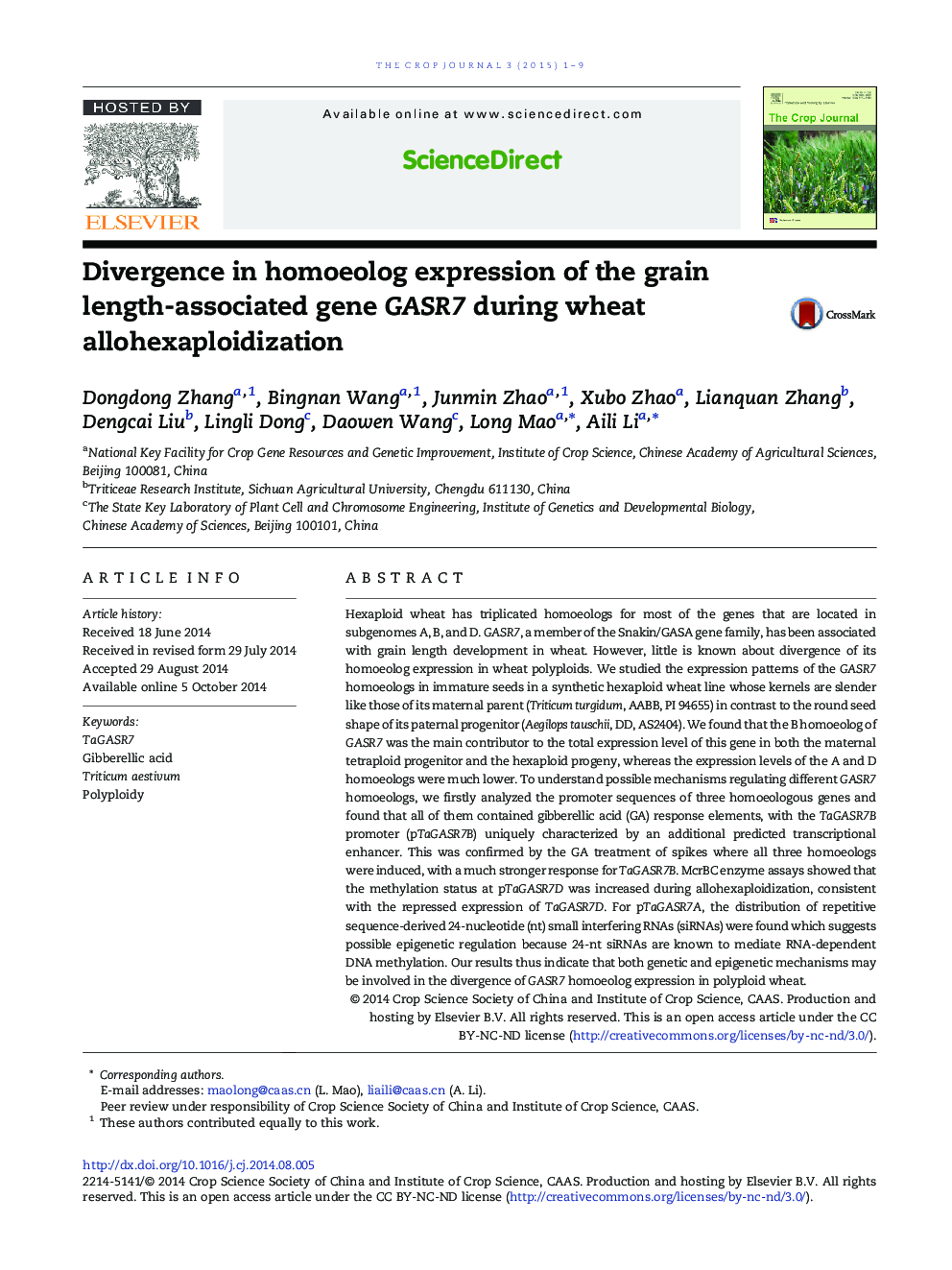| Article ID | Journal | Published Year | Pages | File Type |
|---|---|---|---|---|
| 2079494 | The Crop Journal | 2015 | 9 Pages |
Hexaploid wheat has triplicated homoeologs for most of the genes that are located in subgenomes A, B, and D. GASR7, a member of the Snakin/GASA gene family, has been associated with grain length development in wheat. However, little is known about divergence of its homoeolog expression in wheat polyploids. We studied the expression patterns of the GASR7 homoeologs in immature seeds in a synthetic hexaploid wheat line whose kernels are slender like those of its maternal parent (Triticum turgidum, AABB, PI 94655) in contrast to the round seed shape of its paternal progenitor (Aegilops tauschii, DD, AS2404). We found that the B homoeolog of GASR7 was the main contributor to the total expression level of this gene in both the maternal tetraploid progenitor and the hexaploid progeny, whereas the expression levels of the A and D homoeologs were much lower. To understand possible mechanisms regulating different GASR7 homoeologs, we firstly analyzed the promoter sequences of three homoeologous genes and found that all of them contained gibberellic acid (GA) response elements, with the TaGASR7B promoter (pTaGASR7B) uniquely characterized by an additional predicted transcriptional enhancer. This was confirmed by the GA treatment of spikes where all three homoeologs were induced, with a much stronger response for TaGASR7B. McrBC enzyme assays showed that the methylation status at pTaGASR7D was increased during allohexaploidization, consistent with the repressed expression of TaGASR7D. For pTaGASR7A, the distribution of repetitive sequence-derived 24-nucleotide (nt) small interfering RNAs (siRNAs) were found which suggests possible epigenetic regulation because 24-nt siRNAs are known to mediate RNA-dependent DNA methylation. Our results thus indicate that both genetic and epigenetic mechanisms may be involved in the divergence of GASR7 homoeolog expression in polyploid wheat.
